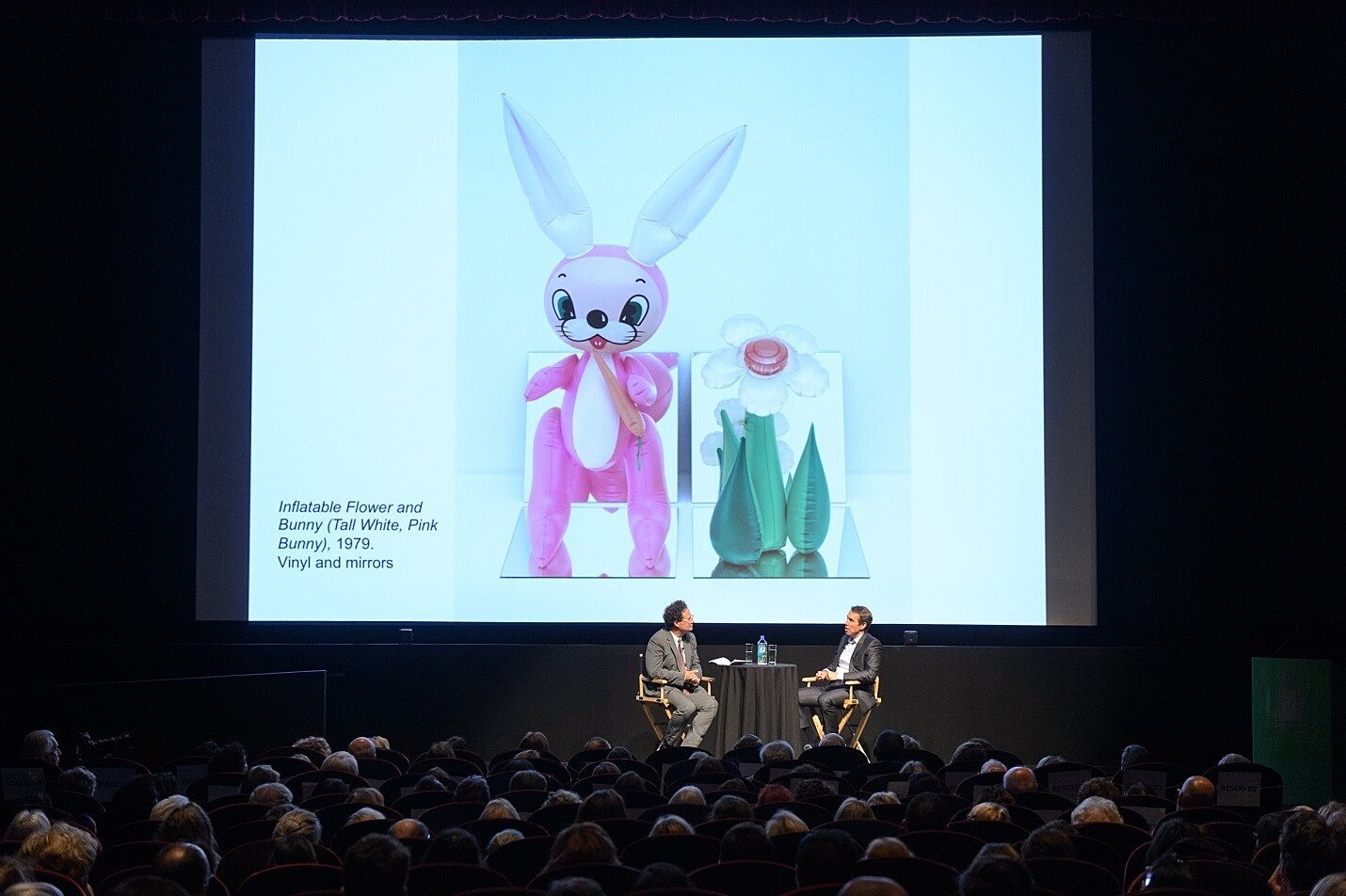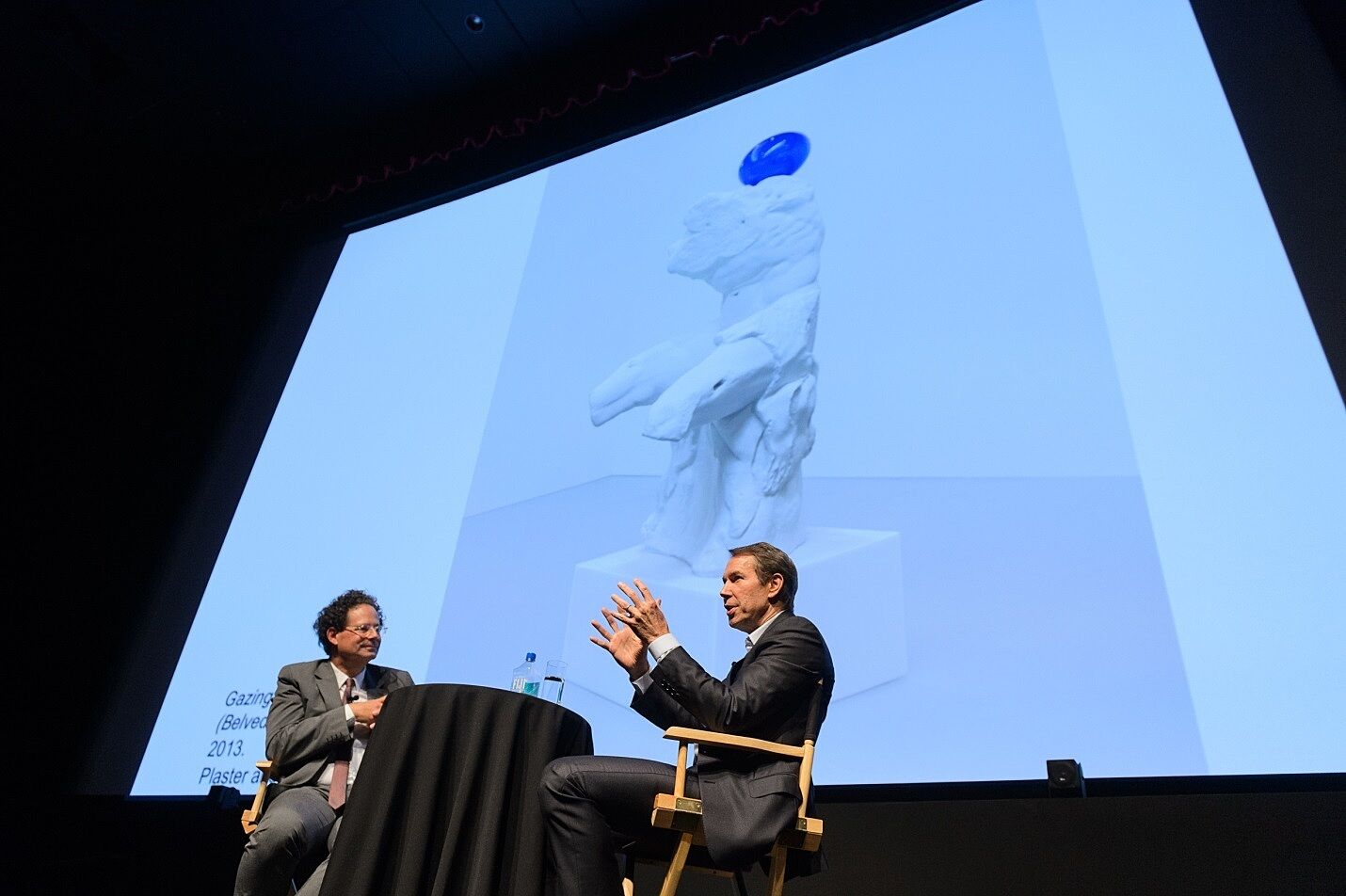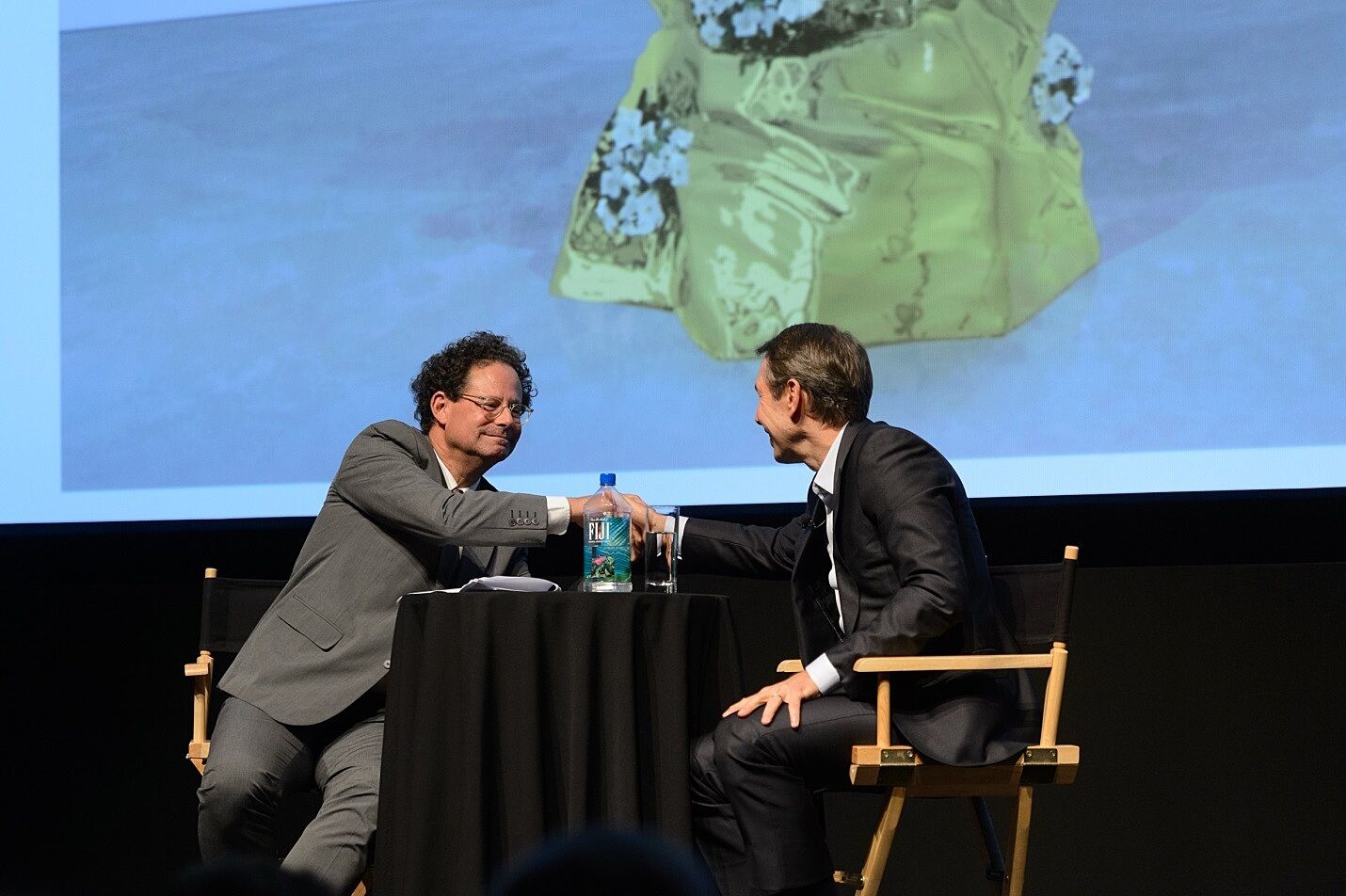Walter Annenberg Annual Lecture: Jeff Koons
Oct 24, 2014
On September 30, the Whitney honored Jeff Koons for his achievements and contributions to the field of American art and culture at the tenth Walter Annenberg Annual Lecture. In a packed house at the School of Visual Arts theatre on West 23rd Street, the Whitney’s Alice Pratt Brown Director, Adam D. Weinberg introduced Koons as “one of the defining artists of our time,” describing his art as “accessible yet esoteric, joyous yet dark, simple in appearance but complex in its meaning and facture, innocent and erotic. . .of the moment and of art history.” The Whitney’s recent exhibition Jeff Koons: A Retrospective enabled visitors to see the full trajectory of Koons’s thirty-year career; in his conversation with Weinberg, the artist reflected upon his work and his inspirations.
One series that is exemplary of Koons’s approach to art is his recent series of sculptures titled Gazing Ball (2013-) in which blue gazing balls are placed on plaster forms, often copies of statues from antiquity such as the Belvedere Torso—a marble figure housed at the Vatican that has inspired artists from Michelangelo until today. Referencing not only the classical past, but the way that artists have copied ancient statues for centuries, Koons cast these classical forms out of plaster. In contrast with such lofty art historical references, gazing balls are inexpensive reflective glass globes that are popular lawn ornaments in York, Pennsylvania where Koons grew up. The artist explained that he is fascinated by the way York’s residents make a special effort to share the visual experience of gazing balls: “. . .you drive by and you see this type of abstraction, it’s generous. . .it’s describing a location, it’s reflecting in 360 degrees. . .the ball is so accessible. . .it’s [the] excitement of the senses.“ He described the plaster form that supports the gazing ball as a “symbol of voices,” having a dialogue about transcendence, "about what it means to be a human being, and about what art can be.” During his conversation with Weinberg, Koons said that he regards these sculptures as explorations of the Platonic ideal: “The sculpture becomes reflected in the piece, it becomes affirmed. . .It falls into the shadows of itself. . .You go from the senses into Platonism and pure form with the eternal.” The gazing ball from somebody’s yard becomes “a symbol of everything.”
Throughout the program, Koons emphasized his ideas about art’s transcendence being affirmative of contemporary viewers: “Art happens inside you. It’s not in that object. The object is a transponder of some type, but it’s about you, it’s about your potential.”
By Dina Helal, Manager of Education Resources and Megan Heuer, Director of Public Programs and Public Engagement



